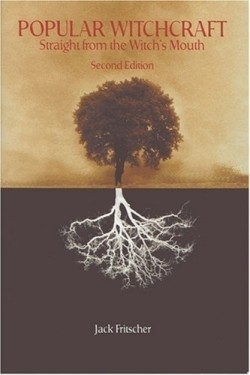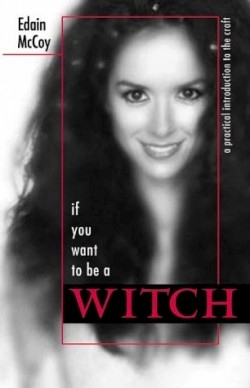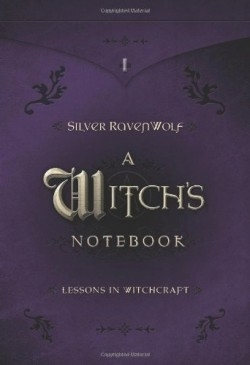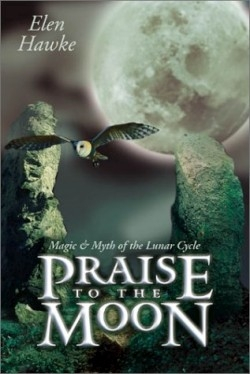5 Books Reveal the Craft of Witches
Before you put on that pointy black hat for Halloween, consider that real witches are among the fastest growing religious group in the United States. Witchcraft may not be the first thing that comes to mind when you think religion, but for some it is just that. It can be the path to enlightenment, with a focus on self-fulfillment and connection to nature. For the full workings of witchcraft and help on the path to becoming part of the community, read any of these occult books.
Popular Witchcraft
Straight from the Witch’s Mouth

Jack Fritscher
Popular Press/University of Wisconsin Press
Softcover $24.95 (262pp)
978-0-299-20304-7
Buy: Local Bookstore (Bookshop)
This book opens with an interview with Anton LaVey, notorious high priest of the Church of Satan. An ex-policeman, LaVey professed to be against both the use of drugs and bringing harm to the human body, yet was, in his own words, an “evil outcast.” Nevertheless, he enjoyed this role, and stated to the author that the satanist is the “ultimate humanist” because satanists revere the human body.
Fritscher is a former Roman Catholic priest and an ordained exorcist. His path from there to his immersion in the realm of satanists like LeVey, and in the occult before the term “New Age” was even whispered, is fascinating. After he became disenchanted with the Roman Catholic Church, Fritscher wrote articles and books on the counterculture of the sixties. Though now even late-night radio broadcasts interviews with witches, Wiccans, and Shamans, in 1972, when Fritscher’s book was first released, the world of alternative religion was partly folded into the so-called “Age of Aquarius.” The spirit of the times captured the author’s imagination and led to his long adventure into the occult.
From Nathaniel Hawthorne, whose great-grandfather presided over the Salem witch trials, to The Wizard of Oz, to the counterculture musical Hair and on to Arthur Miller’s play, The Crucible, the author shows that there is indeed a “popular culture of American sorcery.”
The book is packed with rich detail, such as Fritscher’s examination of the connections among Paul Anka’s 1950s tune “Diana,” the cult of the moon goddess Diana, and why the Virgin Mary was sometimes depicted standing on a crescent moon. However, most of the interviews in this book were conducted more than thirty years ago, and an abundance of books on witches and witchcraft have been published since then. Readers may wonder what prompted the author to release a volume that to some may appear quite dated. Fritscher points to recent attacks on religious freedom by fundamentalists of both Judeo-Christian and Islamic beliefs as the impetus for releasing a second edition of his book.
As the author says, certain elements of American culture “see Satan everywhere” and his book shows that the “personal freedoms inherent in witchcraft threaten those who refuse to separate church from state.” In essence, the nature religions such as Paganism and Wicca preach freedom and tolerance of differences, and as the author holds, there is much to be said for “invoking guardian angels” and “worshiping something of one’s own free choice.”
CAROL LYNN STEWART (August 18, 2009)
If You Want to Be a Witch
A Practical Introduction to the Craft

Edain McCoy
Llewellyn
Unknown $12.95 (264pp)
978-0-7387-0514-9
The author, who has written several previous books on witchcraft, such as A Witch’s Guide to the Faery Folk and Advanced Witchcraft, takes the neophyte witch firmly by the hand and offers solid advice in this guide to the true life of a witch. “A Witch becomes a Witch only through his personal efforts of study and practice. Period,” states McCoy. She provides all the basics a seeker would need to start on the path of the “craft of the wise,” from creating a sacred space, divination, and rituals to the physics of magick, which she describes as “the art of using energies not yet fully understood by science.” The book also covers the sabbats that mark off the wheel of the year, the solstices and equinoxes as well as the celebration that most people associate with witchcraft—Halloween, a major sacred day that witches call “Samhain.”
Witchcraft is a religion, and its adherents seek direct experience of the creator or creators of life. Within the sacred circles that witches draw to create the space between the worlds, a powerful connection with the Goddess and the God can be found. The author states: “The circle in which Witches work and worship is a symbol of eternity. “ The gods are invoked and energy is raised within a sacred circle—energy for healing, or to simply celebrate the gifts of the deities, the coming of spring or the quiet of winter.
Witches also create spells, and the author gives some practical spells for the novice to try, including candle magick, as well as a list of colors that will enhance particular spells. For example, the color blue is good in spells for sleep, dreaming, and fidelity. The author reminds the seeker that spells can fail, and offers advice on what to do when a spell fails. The witch can use divination to find out where a spell was weak, or can find that the spell actually succeeded, only in ways that are not apparent at first.
Though the allure of casting spells may draw some to seek to become a witch, the author cautions that the path of the witch is not for the faint of heart. It requires dedication and a clear sense of personal responsibility. New witches are taught the rede, “As it harms none, do what you will.” This is not an “anything goes” but is a warning to consider the consequences of any action.
Witches are also given the threefold law—that whatever energy a witch sends out comes back threefold, so if negative energy is sent, the witch can be sure that somewhere down the line it will come back. Yet the author assures the reader that the pure magic of the mystical path of the witch is well worth the effort.
ROBIN FARRELL EDMUNDS (August 16, 2004)
A Witch’s Notebook
Lessons in Witchcraft

Silver RavenWolf
Llewellyn
Softcover $12.95 (239pp)
978-0-7387-0662-7
Buy: Local Bookstore (Bookshop)
What if a well-known witch with more than twenty years of experience in witchcraft and more than fifty-three covens in her Clan allowed readers to take a peek inside her own personal notebooks, her own path, revealing what magic worked and what didn’t? In this book, the author, who has written numerous books on witchcraft, including Solitary Witch: The Ultimate Book of Shadows for the New Generation, does just that, and more. With her signature wry sense of humor (she declares that witches need to periodically “dust bust our energy field”), Ravenwolf opens up her notebooks and not only shows the successful techniques she has used in the process of living a magical life, she also points to where this may ultimately lead: to enlightenment.
Enlightened witches? Well, anyone who has seen the movie What the Bleep Do We Know will recognize the blending of the magic of Quantum Physics into the ways in which people create their own realities, moment by moment. Unlike movie or television witchcraft, true witchcraft is the “art of changing consciousness at will” and this is the very essence of the practice of meditation and many of the yogic paths.
Ravenwolf demonstrates one step toward a blend of witchcraft and other “new age/new physics” approaches to enlightenment in a section on letting “Spirit show the way.” A witch who feels overwhelmed will find a way to gain assistance in this exercise. To get past the negative spin of overwhelm, the author tells readers to write down all the things they have to do, without worrying or prioritizing. The spell includes rolled quartz stones—as many as there are tasks on the list—as well as other elements to energize the spell. The witch allows Spirit to choose the order of accomplishment.
In another section titled “As Above, so Below,” the author instructs how to prepare “incense prayer papers,” blending a witch’s spell into the Victorian custom of making petitions to God on strips of paper. The witch’s prayer papers are dipped in a mixture of magical spring water, saltpeter (so they smolder, rather than flash-burn) and essential oils. The witch writes a prayer on the dried paper and lights it. “The essential oil aroma drifts around the sacred area,” says Ravenwolf, sending the prayers into the air itself.
The author presents her notebooks in sections that teach five useful lessons, from the complete cleansing necessary before working magic, to her own “Witch’s Herbal” with lyrical spells that use common and rare plants. For example, she describes an old folk spell: “If you are in need, place a dried Rose of Jericho (sometimes called Rose of Sharon) in a clear bowl of clear water at 3:00 o’clock on a Friday afternoon.”
She goes on to dissect the rose spell, root out its origins, the symbolic elements in it, and how each element relates to the techniques she has built upon in the book’s first four lessons. In fact, the author urges practitioners of witchcraft to do this with all the spells they use: to analyze and research the origins, to pick the spells apart, especially spells that “did not work in the way that you had planned.” In doing this, the witch may be able to identify elements in the spell that indicate why it did not function as intended.
Readers who are new to witchcraft as well as more advanced practitioners will find much to contemplate in this earthy, practical, and rich guide to the essentials of the witch’s path. The author points out that the book is “designed as a hands-on work and does not cover a vast array of explanation,” and she suggests that beginners may want to find books on witchcraft that will enhance their understanding of her lessons. However, the concept of “Beginner’s Mind” mentioned by Chogyam Trungpa in Shambala, The Sacred Path of the Warrior also applies here. The reader who is new to witchcraft may be even more open to the author’s lessons than a witch who has faithfully followed a particular tradition.
What is most refreshing is Ravenwolf’s capacity to use what is useful, whatever the source, yet she grounds all of her teachings in the fundamentals of the witch’s path: reverence for the earth and the forces of nature, a strong respect for the unseen world, and a very practical view of the universe—that whatever energy people put out returns to them in some fashion. This is truly a book packed with gems, and as the author herself states, “May you at least find one pearl of useful wisdom among these pages!”
CAROL LYNN STEWART (August 18, 2009)
Elements of Witchcraft Natural Magick for Teens

Ellen Dugan
Llewellyn Publications
Unknown $14.95 (288pp)
978-0-7387-0393-0
Buy: Local Bookstore (Bookshop)
As the sun begins to caress the horizon, a young woman sits on dew-moistened grass. Eyes closed, her hands feel the stability of the earth and the cool cleansing of the dew. She asks the earth and water to help her to release any negativity or illness that she might have. Opening her eyes, she watches the sun rise and feels its warmth. She quietly asks the Goddess and God to help her purge her hurt and negativity. She sits back, feels the promise of the new day, offers thanks, stands, and goes inside. This is a spell using natural magick.
Modern teens are searching out alternative belief systems to help them cope with an ever-changing world. Witchcraft gets them “back to the basics,” and natural magick is an earth-based form of witchcraft. A witch practicing it uses what she finds in Nature and within herself-no expensive wands, special clothes, or candles. Natural magick can be as simple as conducting a spell like the one above or picking up a rock that catches the eye and keeping it as a talisman. Such a rock can be a symbol of comfort and protection, or may simply feel good when held, like a worry stone.
The author explains the basics of natural magick and how it can be used, building layers of information and gradually offering spells for the reader to try once deeper understanding is achieved. She writes that magick is a tool, emphasizing that “the most powerful tool in magick” is the self. A witch must use the energies and talents that are within, like imagination-picturing something happening, and believing that it will happen.
Magick cannot be used to manipulate others. Witches operate under the Threefold Law: whatever a person does comes back threefold. “Remember,” states Dugan, “positive intentions are an absolute must when you work natural magick. There is no place here for anger, jealousy, or hatred.”
Dugan, a practicing Witch for seventeen years, has three teens of her own. A master gardener, she teaches college classes on gardening and flower folklore; her previous book, Garden Witchery, is about Green Witchcraft (using magick in the garden to help plants grow and to imbue them with stronger magickal qualities).
Dugan’s writing style is clear, fun, and friendly. She explains Earth magick-and how to use it responsibly-without lecturing. The anecdotes in her lessons come from her own life. For example, the book opens with her daughter Kat casting a spell to help bring her lost kitten home on a stormy night.
With Dugan’s guidance and understanding, teens can learn witchcraft and see its benefits in their daily lives. So the next time a shaft of sunlight peeks through some clouds, remember, it may be an answer to a witch’s early morning prayer.
JENNIFER GRIFFIN (October 16, 2003)
Praise to the Moon
Magic and Myth of the Lunar Cycle

Elen Hawke
Llewellyn Publications
Unknown $12.95 (192pp)
978-0-7387-0278-0
To witches and pagans the moon represents the many facets of life and the human spirit. The author takes the reader back through time to visit the Gods and Goddesses of the past as they flow into the present. She explains the moon as a celestial body, and its role as a deity, offering meditations and invocations to help readers further connect with the Goddesses and Gods of the many phases of the moon.
Hawke is a British Witch living in Oxford, England, and has written two other books on Witchcraft: In the Circle and The Sacred Round. A practicing healer and teacher of Witchcraft, she does meditation and chakra work and celebrates the moon and its festivals with her coven.
This book covers the full spectrum of the moon’s phases, including eclipses. There are chapters on moon zodiacs, which are different from the sun zodiacs found in newspapers. Hawke introduces two moon zodiacs: the Indian Lunar Zodiac (from India) and the Celtic Tree Calendar. Although most witches and pagans are familiar with the Celtic Tree Calendar, many are unfamiliar with the Indian Lunar Zodiac. She explains the qualities represented by each “lunar mansion,” but it is difficult to discern where a person’s sun zodiac would fall within the Indian system.
Hawke has done a great deal of research, both in and out of Witchcraft. She presents all sides clearly. For example, in her description of the Goddess Aradia, she writes: “Aradia supposedly comes from Italy… . There is some controversy surrounding her origins and whether she is a true part of Tuscan folklore.” She proceeds to describe the controversy, and then dismisses it, stating: “Whatever the truth behind Aradia’s legend, she is one of the most popular deities among the Wiccan community.” Hawke also prompts the reader to think. At the end of the chapter titled “The Man in the Moon,” which explores the masculine energy in the moon, she suggests: “It might be worth asking how far our ideas about the sun and the moon as archetypical symbols are based on the gender stereotypes of our culture.”
The book offers information about various aspects and rituals of Witchcraft as well as about the moon. Hawke includes five appendices, ranging from getting further information to a basic circle-casting ritual.
Praise the Moon is a book for moon lovers who are looking for some history and good practical information about the moon’s energies and how to use them.
JENNIFER GRIFFIN (December 16, 2002)
Hannah Hohman
